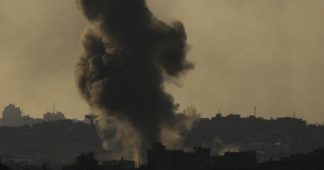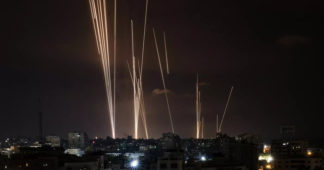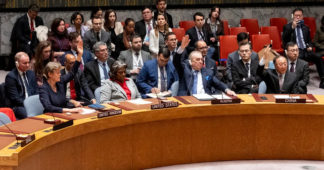The intelligence memo detailing the terror group’s plans was internally circulated on Sept. 19, less than three weeks before the massacre.
Jun 18, 2024
Intelligence documents compiled by the Israel Defense Forces’ Gaza Division only three weeks before Oct. 7 warned that Hamas was preparing for a massive cross-border attack during which at least 200 hostages would be taken, according to Israeli media reports.
The memo, which was internally circulated on Sept. 19, was brought to the attention of at least some top intelligence officials in the military’s Southern Command, Israel’s Kan News reported on Monday night.
The document detailed drills by the Gaza terrorist group’s Nukhba force, which practiced raids on Israeli towns and army bases, as well as how to hold soldiers and civilians hostage once back inside the Strip.
“At 11 a.m., several companies were observed gathering for prayer and lunch before the start of training,” the memo read. “At noon, equipment and weapons are distributed to the combatants, after which a company headquarters drill takes place. At 2:00 p.m., the practice raid begins.”
Hamas terrorists were told to execute hostages to prevent their escape and received orders to raid military outposts for intelligence before returning to Gaza, the IDF memo added.
The junior intelligence officers who observed the exercise estimated the expected number of hostages at between 200 and 250 people. During the actual Oct. 7 attacks on the northwestern Negev, terrorists took roughly 250 people hostage, in addition to murdering 1,200.
One of the soldiers involved in the Sept. 19 report wrote after the massacre, “I feel like crying, yelling and swearing,” per Kan.
In a response to the broadcaster, the IDF did not comment on the alleged memo but said it was probing all failures that led up to Oct. 7 and vowed to present the findings “transparently to the public.”
In April, the head of IDF Military Intelligence, Maj. Gen. Aharon Haliva, announced his resignation from the military, effective after the completion of operational investigations and an overlap process with a replacement. He added that under his command, the Intelligence Directorate “did not live up to the task it was entrusted with.”
Last week, Brig. Gen. Avi Rosenfeld, commander of the Gaza Division, also announced his resignation. IDF Chief of Staff Lt. Gen. Herzi Halevi has signaled he will step down after the war against Hamas ends.
Earlier this year, Halevi announced an internal probe into the military’s failures, calling the investigation a “duty and not a privilege.”
In January, Israel’s Walla news site cited military sources as claiming that while the IDF was aware of Hamas’s repeated attempts to blow up the security fence on the Gaza border in preparation for the Oct. 7 attacks, it opted to dismiss the rehearsals as a “provocation.”
Hours before Hamas’s attack, IDF intelligence learned that hundreds of terrorists in Gaza had activated Israeli SIM cards in their phones, the military censor cleared for publication in February. The activations were reportedly detected around midnight on the night of Oct. 6.
In October, The New York Times reported that Unit 8200, the IDF’s leading signals intelligence unit, stopped listening to Hamas’s handheld radios a year before the attacks, deciding it was a “waste of effort.”
In addition, critical computer systems used by Unit 8200 broke down on Oct. 6 and were only repaired some 90 minutes before Hamas launched its cross-border massacre, Israel’s Channel 12 reported on Saturday.
With reporting by JNS.
We remind our readers that publication of articles on our site does not mean that we agree with what is written. Our policy is to publish anything which we consider of interest, so as to assist our readers in forming their opinions. Sometimes we even publish articles with which we totally disagree, since we believe it is important for our readers to be informed on as wide a spectrum of views as possible.











